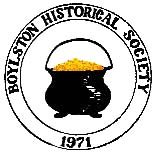Apple Parers & Peelers
Apple Parers & Peelers
By Judy Haynes
October starts our Fall season and with it the crisp autumn days that evoke warm fires and apple pies. It is the season when apples have ripened and are ready for picking and family fun time. From our collection, you see one of the C.E. Hudson Parer Company’s apple peelers of 1882. It was known as “The Rocking Table Apple Parer” and was a popular item. It was said they manufactured as many as 50,000 apple paring machines a year. This kitchen tool of cast iron was made right here in Leominster, Massachusetts. Antique dealers today ask $69 for such an item, assuredly six times more than the cost in 1882.
From the Leominster Town Reports, Leominster Historical Society, Hudson’s ad states “Best machine ever put on the market for paring, slicing and coring apples.” No price is mentioned. They also sold other hardware and novelties for use in the kitchen. Leominster, is also known as the birthplace of John Chapman (1774 -1845), better known as Johnny Appleseed, but he didn’t start planting apple trees here. He learned to be an orchardist later in Ohio and began his planting nursery there. He was familiar with this nutritious fruit as they were already being grown here having been brought over from Europe by the earliest settlers. According to Boylston’s historian, George L. Wright, in his 1875 unpublished manuscript, “Boylston has some of the best orchards in the County.” It was the 4th largest crop that year with 20,930 barrels of apples valued at $8,100. Only potatoes, milk, and hay came in higher as valuable agricultural products in this farming community.
The invention of an “improved” apple peeler is attributed to David Goodell, 1864, a New Hampshire man who was even their governor at one time. When he took to the road as a traveling salesman, he sold 24,000 of his “Lightning Apple Parers” in one month, thus saving the tedious task previously performed by hand and knife. From internet photos of the Goodell tool, our Hudson peeler appears to be similar in form and function and still today a similar tool is available for those preferring the speed of a machine over the paring knife. According to Debra Smith Bach, New York Historical Society, 250 apple peeler designs were patented between 1803 & 1910. Earlier ones did not appear to be as efficient or complete as the later Goodell or Hudson designs.
The apple tree originated in Kazakhstan, Central Asia, “where wild apple trees still thrive.” This delicious and nutritious fruit has been around since biblical times, but while the Bible may attribute it as the “forbidden fruit,” New Englanders have loved apple eating, pies, and cider since its arrival with European settlers who brought seeds and grafts with them. English cookery cookbooks (1773) had an apple pie recipe as did Fannie Farmer’s Boston Cooking-School Cookbook (1896). Fannie Farmer listed no less than 20 apple recipes in her 1896 cookbook. Apples and apple pie making are New England traditions, with the baking of apple pies, a most enjoyable heritage particularly prevalent in Fall.
________________
Acknowledgements: Apples, Worldatlas.com; Apple Parer Museum; Boylston Historical Society archives; Who Invented the Apple Peeler, 2017; he Virtual Apple Parer Museum;; Edited by Nancy Filgate, BHSM curator
